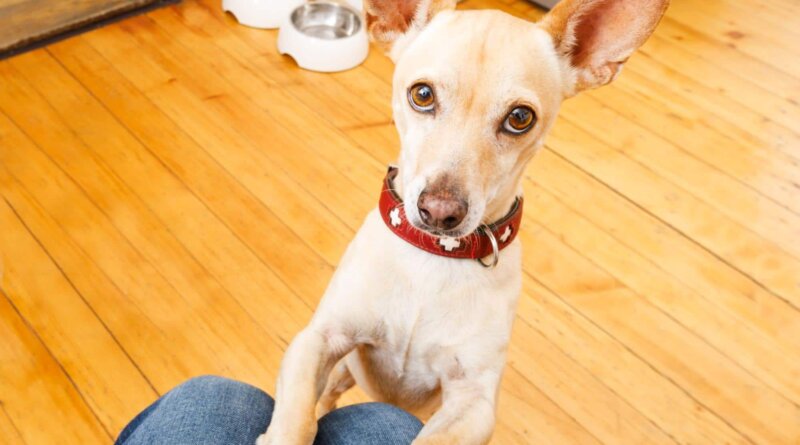What Is Your Dog Telling You? | Dog Care Tips
This Monday is Earth Day; an event initially started in 1970 by a U.S. senator to be a teaching event at schools and colleges, occurring every ten years. In 1990, it became an annual event and is now celebrated around the world.
The senator’s intention was for people to educate each other about the environment, but he seems to have forgotten to include the best teacher of all.
People always ask me how I learned so much about dogs, and I tell them that my first teacher was my grandfather. But he had a teacher before he taught me, and that was nature itself.
Listen to Nature
While I also learned about dogs and animals from my grandfather, what I learned was that you have to listen to nature — and work with her — if you want to be successful at what you do.
If you plant a rose bush in Antarctica, it will wither in the cold and not survive unless, of course, you build a greenhouse to protect it. Humans are very good at that sort of thing. If a natural environment isn’t quite suitable for us, we change it with things like air conditioning or heating, and we put buildings everywhere.
But we often forget the reverse of that idea.
If your artificial environment isn’t working for you, then you need to ask yourself, “What is missing here from nature, and how can I bring it back in?” I’ve seen this in Seattle, where there’s not much sunlight, so it’s not uncommon for people to have UV lamps in their homes and offices.
How Does This Apply To Your Dog?
How Does This Apply To Your Dog?aLikewise, if you’re having trouble with your dog, this is the first question you should ask yourself. “What is missing here from their nature, and how can I bring it back in?”
Notice that the question isn’t “Is something missing?” If your dog is misbehaving, she’s already told you that there is. It’s your job, as Pack Leader, to listen and figure out what you need to bring inside from nature to achieve balance.
Your Dog’s Expressions
One of the most common dog misbehaviors I’m asked about is excessive barking. There are various causes for it, but they all come down to the same thing. A dog that barks excessively is trying to tell you that her needs are not being met. The barking may be due to boredom, excess energy, or separation anxiety, but obviously, your dog cannot tell you in words which one it is.
She can tell you in action, though, and her energy and body language are nature’s way of explaining the problem. It’s your job to listen to that message, then provide what’s lacking — mental stimulation if your dog is bored, exercise if she’s overly energetic, and clear rules, boundaries, and limitations if she’s showing separation anxiety.
As we celebrate Earth Day this year and learn about the environment and how to maintain and sustain it, we should also take the opportunity to learn about nature at home. What is your dog trying to tell you? If something is missing, what is it?
And don’t worry. If nothing is missing, your dog will tell you that, too, with calm, submissive energy, good behavior, and balanced contentment, just living in the moment, being part of nature.

Specific Things Your Dog is Trying to Tell You
It’s our job as pack leaders to listen, learn, and provide. Understanding their body language can be very simple when communicating with your dog, but their signals are hard to interpret.
Dogs actually have an extensive vocabulary of communication and can tell us a lot about their feelings. It’s essential to train yourself to know when your dog is worried, anxious, or stressed and address the issues before they escalate into more significant problems.
Here are the most common situations where dogs communicate their needs and what they should mean to you.
Request For Food
Dogs can show a request for food in several ways. Some will sit or lie down quietly, staring at you until you get the hint, but others are more persistent and pushy. They might beg by tapping their bowl with their paw until your turn to feed them or whining and putting their paws in the air.
Either way, it’s not pleasant to have a dog that demands to be fed at all times. You can prevent begging by training them to use a slow-release bowl where they get fed throughout the day.
They’re Seeking Affection
Dogs are affectionate animals that like to show how much they love their pack leader. By rubbing against you or rolling in front of you, a dog is trying to get you to pet and scratch them. If your dog is very comfortable around you, they may even begin to lick your hand to get you to pet them.
Some dogs will even push their heads into your hands or jump up on you in an attempt to gain attention. Jumping should not be encouraged as it can lead to destructive behavior in the future, but it’s always nice to know that your dog wants your companionship.
They Want To Play
When a dog wants to play, it will usually have a wagging tail and an exciting posture. They may jump around or bark to try and get your attention, which is their way of saying that they want to engage in an activity with you.
Your dog may even dive under your legs or leap for a toy in an attempt to get you to play fetch. This is a sign that they’re happy and enjoying themselves, whether you play with them or not.
Playful and Untrained
When ignored, some dogs might resort to nipping at your legs or barking until you do something with them. Try not to let this behavior happen, as it can also lead to bigger issues in the future.
If you are experiencing trouble with your hyperactive dog, please see our training page for how we can help.
They’re Anxious/Stressed
Anxious dogs tend to be clingy and quiet. They may seek reassurance by coming close to you or following their owner around. Be careful; this can also lead to separation anxiety, characterized by excessive barking and destructive behavior when you leave home.
They Need To Use The Bathroom
To tell if your dog needs to use the bathroom, you need to pay attention to their body language. If your dog is uncomfortable about something and needs to go, they may pace around or circle in place as if looking for an escape route. They might even start sniffing around the area a lot more than usual before eventually just going where they please.
Smaller Dog
If you have a smaller dog, they may jump up and down in the same place if they need to go, especially if they’re trying to avoid going inside. Either way, this is their way of telling you that it needs to go outside right now.
Larger Dog
If you have a larger or more stubborn dog, they may slowly walk to the door with a hunched posture until they eventually give up and relieve themselves. You will have to watch their actions for a while in order to see the signs of discomfort before you know when they need to go outside.
They’re In Pain
Dogs can show their pain in several ways. They may lie still on the ground and act more lethargic than usual, whining if they feel like it. If you think your dog may be hurting, you should be on the lookout for unusual aggressive behavior or changes in its eating, drinking, and sleeping habits.
If you notice mobility issues or drastic changes in their physical body, it may be best to get your dog checked out by a veterinarian.
They’re On Alert
Your dog’s tail can tell you a lot about its current emotional state. A wagging tail shows that they are happy, friendly, or excited, while a straight-up and pointed tail shows that your dog is more serious and alert.
Pointed Stance
This pointed stance is often a signal for hunting dogs that prey is close by, and you should be quiet and approach carefully. It may also be a sign that your dog is trying to dominate the area and take up more physical space.




